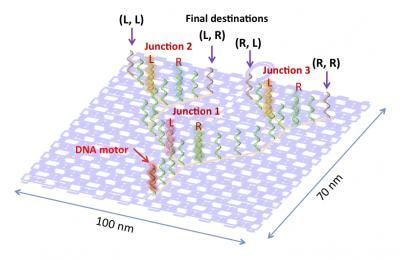Nanomaterials database improved to help track products
nanomaterials are the heart of the smaller, better electronics developed during the last decade, as well as new materials, medical diagnostics and therapeutics, energy storage, and clean water. However, exposure to nanomaterials may have unintended consequences for human health and the environment.
As a resource for consumers, scientists, and policy makers, the Virginia Tech Center for Sustainable Nanotechnology (VTSuN) has joined the Woodrow Wilson International Center for Scholars to renew and expand the Nanotechnology Consumer Product Inventory, an important source of information about products using nanomaterials.
"We want people to appreciate the revolution, such as in electronics and medicine. But we also want them to be informed," said Nina Quadros, a research scientist at Virginia Tech's Institute for Critical Technology and Applied Science and associate director of VTSuN, who leads a team of Virginia Tech faculty members and students on this project. Todd Kuiken, senior program associate, and David Rajeski, director of the science and technology innovation program, lead this project at the Wilson Center.
The Wilson Center and the Project on Emerging Nanotechnology created the inventory in 2005. It grew from 54 to more than 1,000 products, many of which have come and gone. The inventory became the most frequently cited resource, showcasing the widespread applications of nanotechnology. However, in 2009, the project was no longer funded.
"I used it in publications and presentations when talking about all the ways nano is part of people's lives in consumer products," said Matthew Hull, who manages the Institute for Critical Technology and Applied Science's investment portfolio in nanoscale science and engineering, which includes VTSuN. "But the inventory was criticized by researchers, regulators, and manufacturers for the lack of scientific information available to support product claims."
In a meeting with his friend, Andrew Maynard, director of the University of Michigan Risk Science Center, who had initiated the inventory when he was at the Wilson Center, Hull proposed leveraging Institute for Critical Technology and Applied Science and VTSuN resources to improve the inventory.
"My role was to ask 'what if' and VTSuN ran with it," said Hull.
A partnership was formed and, with funding from the Virginia Tech institute, VTSuN restructured the inventory to improve the reliability, functionality, and scientific credibility of the database.
"Specifically, we added scientific significance and usefulness by including qualitative and quantitative descriptors for the products and the nanomaterials contained in these products, such as size, concentration, and potential exposure routes," said Quadros.
For example, an intentional exposure route would be the way a medicine is administered. An unintentional exposure would be when a child chews on a toy that has been treated with silver nanoparticles that are used as an antimicrobial.
The potential health effect of nanomaterials on children was Quadros doctoral research and she used the inventory to find products designed for children that use nanomaterials, such as plush toys.
"One of the best things about the new version of the inventory is the additional information and the ability to search by product type or the type of nanomaterial," she said. "When researchers were first attempting to assess the potential environmental impacts of nanotechnology, one main challenge was understanding how these nanomaterials might end up in the environment in the first place. After searching the CPI and seeing the vast applications of nanotechnologies in consumer products it was easier to narrow down scenarios."
For example, Quadros said many silver nanoparticles are used in clothing for antimicrobial protection, so we can infer that some silver nanoparticles may end up in wastewater treatment plants after clothes washing. This helped justify some of the research on the effects of silver nanoparticle in the biological wastewater treatment processes. Currently, the inventory lists 188 products under the 'clothing' category."
This team also included published scientific data related to those products, where available, and developed a metric to assess the reliability of the data on each inventory entry.
The team interviewed more than 50 nanotechnology experts with more than 350 combined years of experience in nanotechnology, Quadros said. "Their answers provided valuable guidance to help us address diverse stakeholder needs."
In addition, the site's users can log in and add information based on their own expertise. "Anyone can suggest edits. The curator and reviewer will approve the edits, and then the new information will go live," Quadros said.
"We've added the horsepower of VTSuN, but opened it by means of crowdsourcing to new information, such as refuting or supporting claims made about products," Hull said.
"The goal of this work is to create a living, growing inventory for the exchange of accurate information on nanoenabled consumer products," Quadros said. "Improved information sharing will allow citizens, manufacturers, scientists, policymakers, and others to better understand how nanotechnology is being used in the consumer marketplace," she said.
The inventory currently lists more than 1,600 consumer products that claim to contain nanotechnology or have been found to contain nanomaterials.




















































